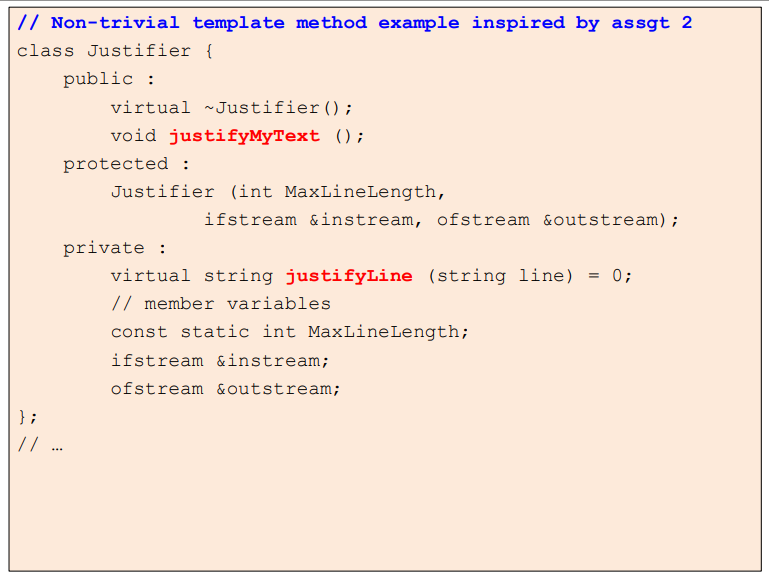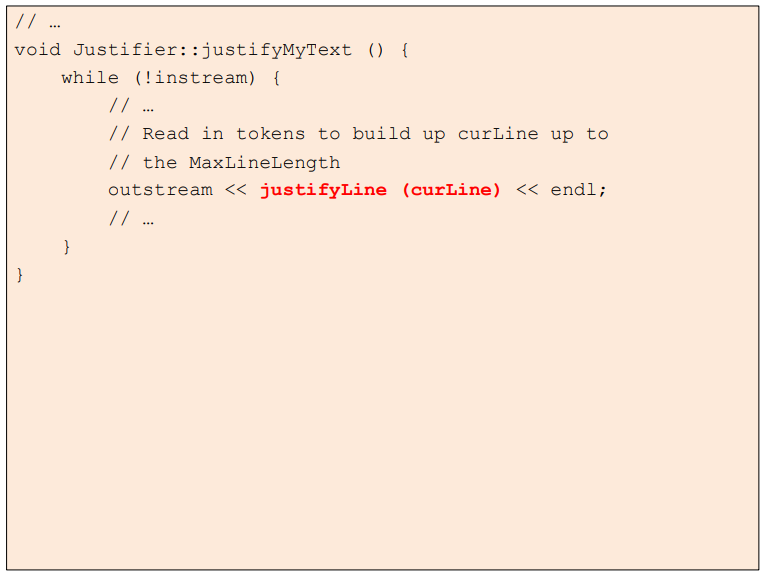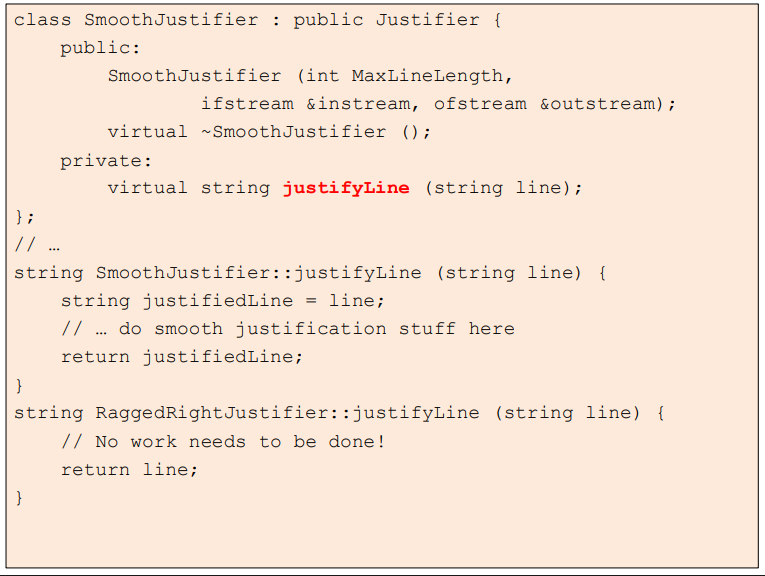Template Method Design Pattern
This has nothing to do with Template (C++).
Introduced in CS247 after introducing the Liskov Substitution Principle.
The Template Method Pattern is used when a subclass should be able to modify same parts of a method’s behavior, but not all.
With Template Method Pattern, we provide a structure/recipe/template for what this method will do.
Use Case of Template Method Pattern
Allow subclasses to customize portions (but not all) of this method by performing overrides.
In video game, I have two types of Turtles: RedTurtle + GreenTurtle.
class Turtle {
virtual void drawShell() = 0;
void drawHead() { 😄; }
void drawLegs() {🦵🦵🦵🦵; }
public:
void draw() {
drawHead();
drawShell();
drawLegs();
}
}
class RedTurtle: public Turtle {
void drawShell() override { 🔴; }
};
class GreenTurtle: public Turtle {
void drawShell() override { 🟢; }
};There are 2 really important things to notice here:
drawmethod is public and non-virtual- Nobody who subclasses
Turtlecan overridedraw. GreenTurtleandRedTurtlecan define draw, but it won’t be an override, won’t be called if we useTurtles polymorphically
- Nobody who subclasses
drawShellis private, but we can still override it!- Access specifiers only describe when methods can be called, not how they may be overwritten.
From CS138
This is a (very simple) example of the TemplateMethod design pattern:
- The parent has a high-level recipe that is the same for all children
- … but the recipe has sub-pieces whose details will be different depending on the details of the children
- The parent method is (typically)
public, while the recipe sub-pieces areprivateand abstract and declared in the parent - The children figure out how to implement the recipe sub-pieces; the parent specifies the rest.
Example


